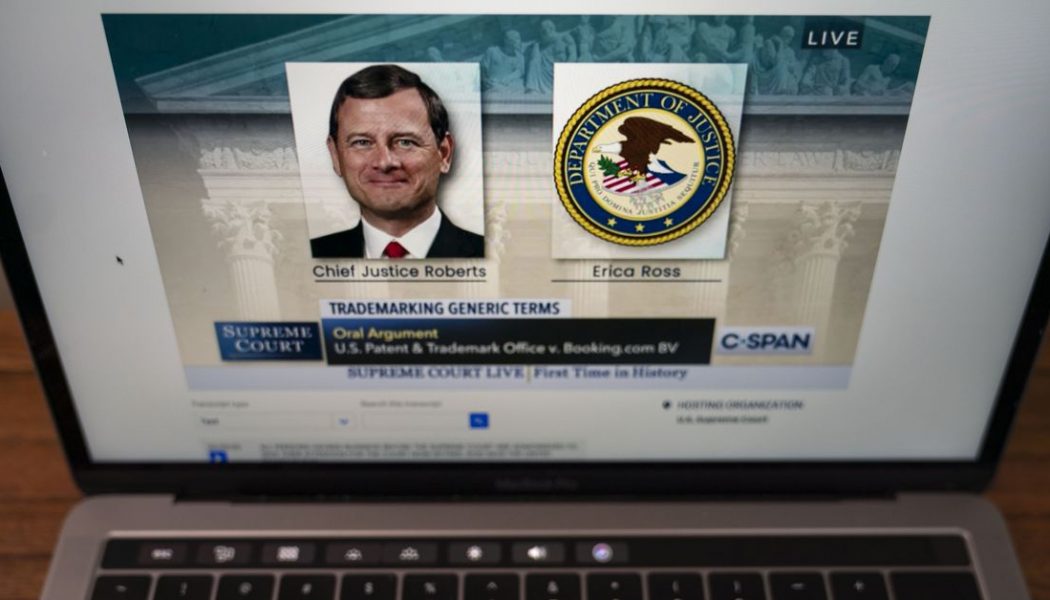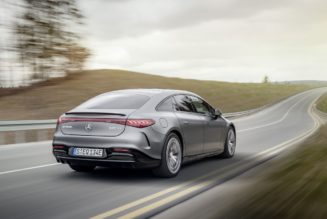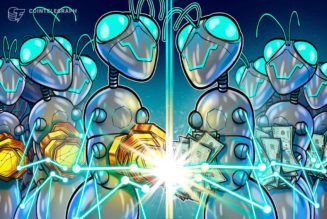
Yesterday morning, the Supreme Court heard its first remote oral argument and streamed the event live online for the first time. The case was Patent & Trademark Office v. Booking.com, an intellectual property dispute that’s potentially important but not very flashy. But it was one of a handful of cases rescheduled for May after being indefinitely postponed due to the coronavirus pandemic, and it was a largely successful trial-run for a (relatively) high-tech experiment.
Justice Sonia Sotomayor may have briefly forgotten to unmute her phone at one point during the hearing. Justice Stephen Breyer’s connection seemingly faltered for a few seconds, turning part of one question into a garbled mess. For most of an hour-plus debate over trademark law, though, the court made a successful first foray into live-streamed, teleconferenced arguments — a promising signal for the coming weeks and possibly months.
The Supreme Court announced last month that it would start hearing arguments over the phone, while justices and attorneys stayed either at home or in a mostly empty government building. Roughly a dozen cases are scheduled for a hearing in the first half of May. As NPR explained beforehand, these teleconferenced arguments don’t follow the court’s normal spontaneous questioning format where justices often talk over or interrupt each other and the attorneys with rapid-fire interrogation. On the phone, each justice asks a set of questions in order of seniority.
Attorney Roman Martinez, who’s set to argue a case before the court later this week, thinks this setup creates a different — and, in some ways, welcome — dynamic. “It is nice as an advocate to be able to know that you’ll be able to get the answer out to the justice’s question without being cut off by another justice,” he says. “So it does provide for a little bit more of a back and forth where the advocate can have some confidence that they can get an answer out.” It also produced one surprising result: a handful of questions from Justice Clarence Thomas, who hasn’t spoken up during an oral argument for more than a year.
That said, Martinez would rather see the old system return when physical courts come back in session. “It’s more of a free-flowing exchange — and you can kind of go from topic and concern to topic and concern in a more natural way.”
With physical buildings closed due to the coronavirus pandemic, courtrooms across the country have been moving online. That’s created complications for some lawyers and defendants, especially people who have limited internet connectivity or aren’t used to videoconferencing software. Audio-only teleconferencing, however, is simpler than video recording — something the Supreme Court has long resisted and hasn’t changed its stance on now. On the other hand, it means justices can’t even get a hint of nuances like facial expressions or body language.
The Supreme Court already releases audio recordings of its sessions, and sites like SCOTUS Blog have long sent reporters to live blog cases from the courthouse. But the streaming format turned yesterday’s case into a full-fledged public event. With a live feed, lawyers and other court-watchers gathered on Twitter to swap quips and analysis, like a faux cross-stitch of one oddly vivid metaphor involving dead crabs.
This might create a less pleasant situation next week when the court will hear multiple arguments about President Donald Trump’s tax returns. There’s a real chance of the president furiously live-tweeting commentary during the hearings or even publicly venting his frustration with specific justices, something he’s done in the past. There are also much more contentious cases on the horizon, like the copyright fight between Oracle and Google, which has spilled out of court briefings and into public callouts during the past few months.
In the long term, though, the Supreme Court has opened the door to a more easily accessible look at our justice system — and shown that it can adapt to a changing world. “I think that the format is not the first choice format, it’s not the ideal format,” says Martinez. “But I think it’s a good second-best solution given the circumstances we’re in.”








